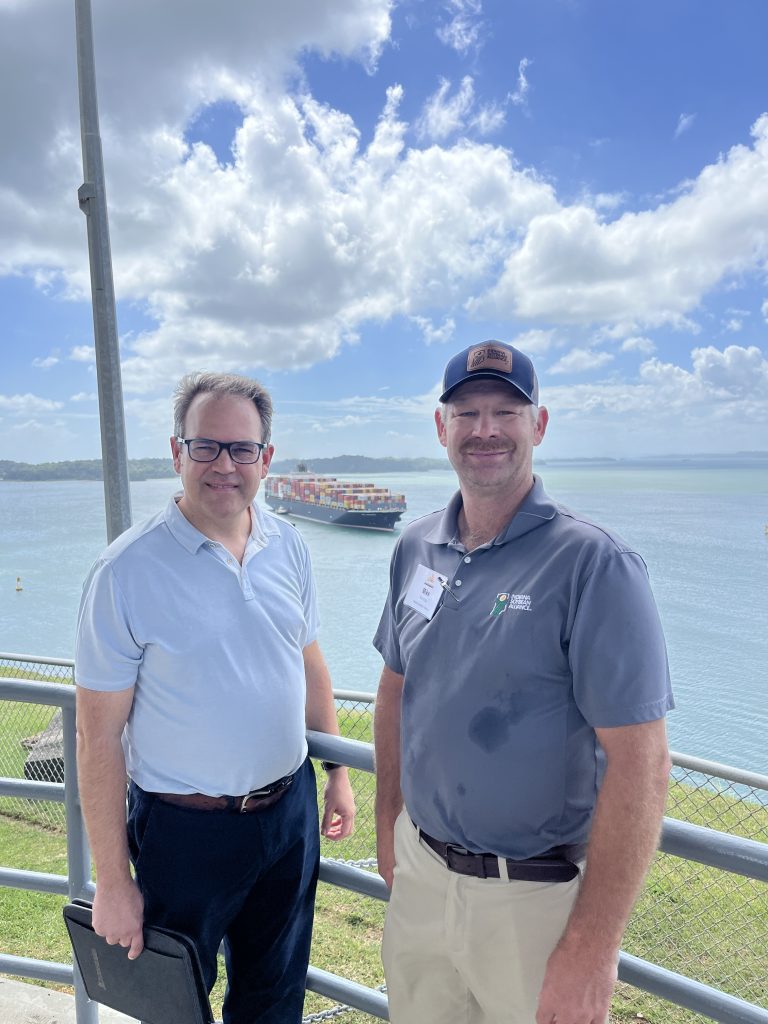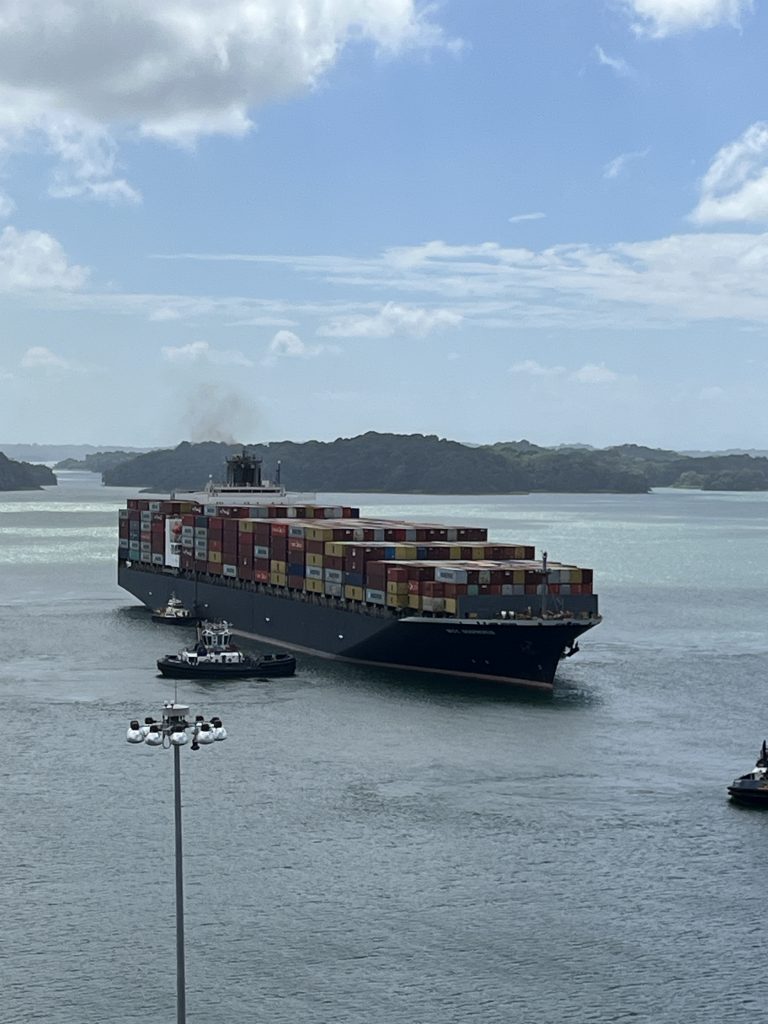Panama Canal remains a critical supply chain link under stress
By Mike Steenhoek, Executive Director
Soy Transportation Coalition

For farmers to be effective advocates on issues of importance to agriculture, they must first understand these issues. Arguably, nothing enhances understanding than seeing the issue with your own eyes. It was for this very reason that the Soy Transportation Coalition had its annual meeting in Panama on Dec. 17-20, 2023.
Established in 2007, the Soy Transportation Coalition (STC) is comprised of the Indiana Soybean Alliance, 13 additional state soybean boards, the American Soybean Association and the United Soybean Board. The STC exists to promote a more cost-effective and reliable transportation system for U.S. soybean farmers. The organization is actively engaged in enhancing rural roads and bridges, highways and interstates, freight rail, inland waterways and ports.
Indiana soybean farmers Mike Koehne, of Greensburg C.J. Chalfant, of Hartford City, and Phil Ramsey of Shelbyville, serve on the STC board. Koehne currently serves as secretary-treasurer.
A critical supply chain link
The Panama Canal is a critical link in the supply chain for U.S. soybeans and grain – facilitating a significant volume of exports originating from the Gulf of Mexico to be shipped to customers in Asia. In 2022, approximately 600 million bushels of U.S. soybeans transited the canal.
During the STC board meeting, the group toured the Panama Canal on both the Atlantic and Pacific sides. Given the 50-mile width of the isthmus, Panama is one of the most unique places in the world in which one can travel by automobile between the two oceans in less than 90 minutes.
The group also received an update from the Panama Canal Authority on the impact of the drought conditions on navigation. Since the Panama Canal is not a sea level canal and instead utilizes locks, the operation of the canal is a function of available precipitation that occurs to fill Gatun Lake – the reservoir that feeds fresh water to the canal locks.
Every time either the original 1914 “Panamax” locks or the expanded 2016 “Neopanamax” locks allow a ship passage, approximately 50 million gallons of water exit the lock chamber to eventually join with the Atlantic or Pacific oceans. Without an abundance of fresh water, the Panama Canal cannot operate.
To mitigate the impact of the drought, the Panama Canal Authority is having to resort to water-saving measures. The two main methods of conserving water at the Panama Canal are:
- Reduce the draft available for ships when transiting
- Limit the number of transits

The “Neopanamax” locks continue to have a draft restriction of 44 feet from the normal 50 feet. Larger, heavier ships displace more water. By limiting the draft in the “Neopanamax” locks, the canal is limiting the number of larger vessels normally able to utilize the canal.
Container vessels, LNG vessels and cruise ships largely utilize the “Neopanamax” locks. Dry bulk vessels – including soybeans and grain – continue to overwhelmingly utilize the original 1914 “Panamax” locks. The regular draft of 39.5 feet has been maintained for the “Panamax” locks.
The Panama Canal unfortunately has had to resort to significant reductions in daily transits. While the Panama Canal Authority has been able to moderately increase the number of transits daily from 22 to 24, this is still considerably lower than the normal 36-40 transits per day.
Ag exporters seek other options
Due to the limitations at the Panama Canal, agricultural exporters have had to resort to other options, including the Suez Canal, around the southern tip of Africa at the Cape of Good Hope, or railing shipments to the West Coast. According to the USDA, it is 9,141 nautical miles from the Mississippi Gulf to Japan via the Panama Canal, 14,401 nautical miles from the Mississippi Gulf to Japan via the Suez Canal, and 15,637 nautical miles from the Mississippi Gulf to Japan around the southern tip of Africa.
Having to forego the Panama Canal will add considerable expense and time. The Suez Canal and Cape of Good Hope routes add at least 14 days to the journey for soybean exports. Recent terrorist attacks on ocean vessels in the Red Sea have caused exporters to reconsider the Suez Canal route.
For soybeans grown west of the Mississippi River – particularly in the Plains States – railing to the Pacific Northwest (PNW) is usually the most economical option. However, soybean exporters are having to resort to expanding that geographic area utilizing rail serve to the PNW due to the challenges at the Panama Canal. This will usually involve additional costs, as well.
The world’s oceans are vast and expansive, but there are many critical junctures that, under normal circumstances, greatly facilitate global commerce. However, when these essential links in the supply chain, like the Panama Canal, are under stress, the ability of farmers and others to connect with their international customers becomes a challenge. It is important for soybean farmers to understand and be effective advocates for these issues of great importance to U.S. agriculture.
Posted: January 13, 2024
Category: Indiana Corn and Soybean Post - January 2024, ISA




